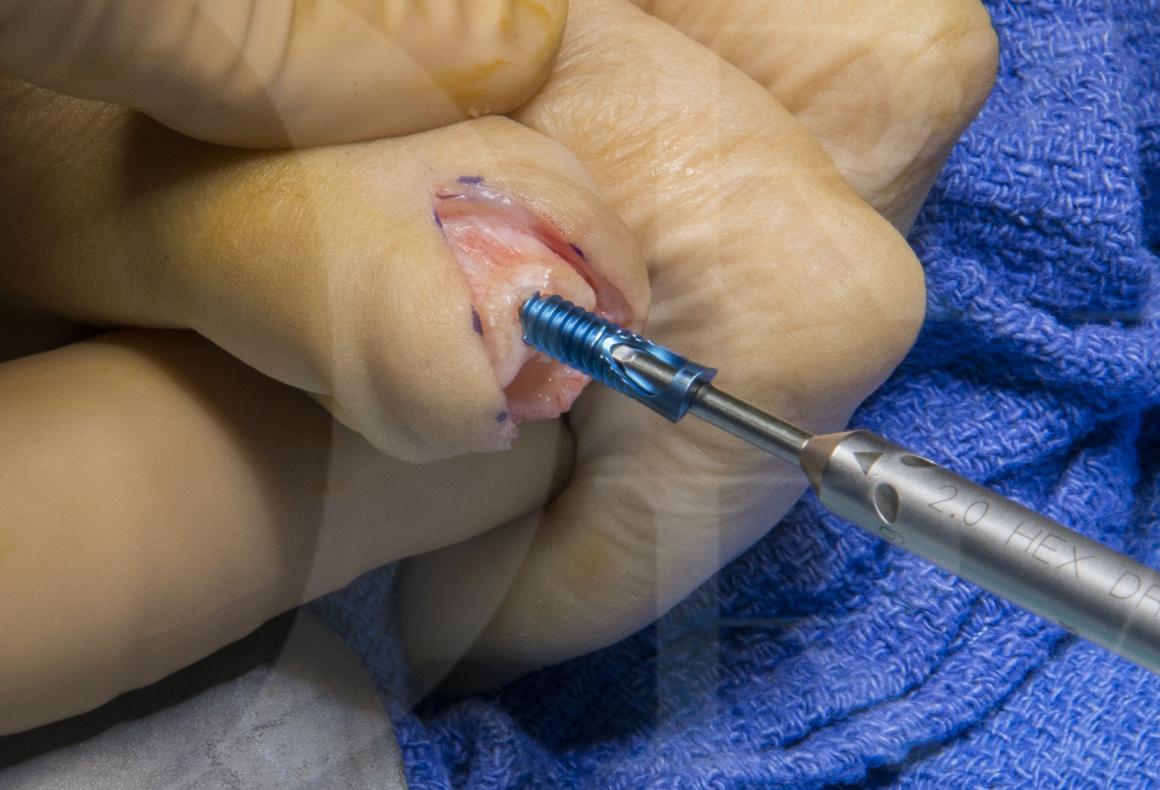Proximal interphalangeal joint (PIPJ) arthrodesis in the hand, using the APEX system (Extremity Medical)
Overview

Subscribe to get full access to this operation and the extensive Upper Limb & Hand Surgery Atlas.
Learn the Proximal interphalangeal joint (PIPJ) arthrodesis in the hand, using the APEX system (Extremity Medical) surgical technique with step by step instructions on OrthOracle. Our e-learning platform contains high resolution images and a certified CME of the Proximal interphalangeal joint (PIPJ) arthrodesis in the hand, using the APEX system (Extremity Medical) surgical procedure.
Whether the underlying pathology is trauma, infection, CRPS, nerve dysfunction, inflammatory or degenerative joint disease, surgery on the finger aims to restore function and reduce pain. If joint movement, pain relief or stability cannot be achieved with reconstruction options then arthroplasty or arthrodesis are reliable alternatives.
The described case is that of a patient who sustained median nerve, ulna nerve and flexor tendon injuries at the wrist. Due to a combination of the initial injury and poor engagement with rehabilitation, the patient developed chronic regional pain syndrome (CRPS) Type 2 with severe neuropathic pain, allodynia, vasomotor and sudomotor instability, joint stiffness and neglect of the hand.
Despite other interventions, the fingers remained in a fixed flexion posture and in order to turn a useless hand into an “assist” hand, the joint arthrodeses were performed.
In this case, the APEX intra-medullary system was chosen as it was decided that the risk of implant failure or peri-prosthetic fracture would be high using other methods given the osteoporotic nature of the bone after the prolonged period of disuse.
PIPJ fusion procedures using this system can be performed under local, regional or general anaesthetic and the patient is placed in a plaster cast post-operatively. The plaster can be changed at 1-2 weeks to a thermoplastic splint (dependant on patient compliance) to support the specific joints arthrodesed and allow mobilisation by the hand therapist of the adjacent joints to avoid tendon adhesions and stiffness.
The Apex system provides predictable angles of arthrodesis, resulting from controlled preparation of the joint and parallel joint surfaces that correlate to the implants position. The intra-medullary nature of the fixation is robust, not prone to failure and its location avoids the dorsal skin irritation often seen with other fusion techniques.
Although the case series are small at present with the APEX device, the published union rate is around 100%, without implants needing to be removed due to skin or tendon irritation.
OrthOracle readers will also find the following operative techniques of interest:
Author: Mr Mark Brewster FRCS (Tr & Orth) & Mr Dominic Power FRCS(Tr & Orth)
Institution: The Royal Orthopaedic Hospital, and Queen Elisabeth Hospital, Birmingham, UK.
Clinicians should seek clarification on whether any implant demonstrated is licensed for use in their own country.
In the USA contact: fda.gov
In the UK contact: gov.uk
In the EU contact: ema.europa.eu



















